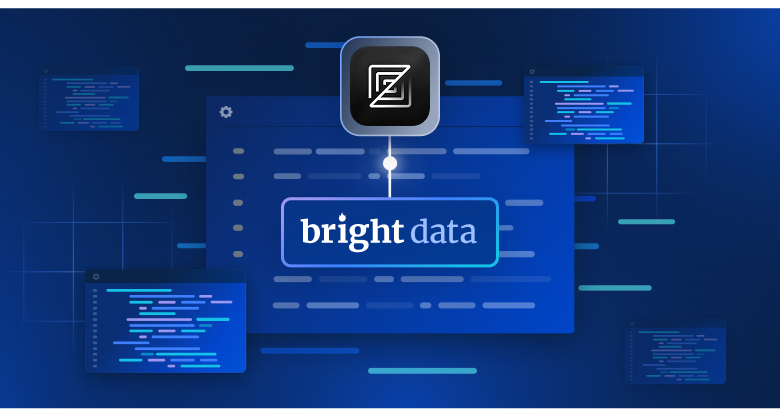Web crawlers are a critical part of the infrastructure of the Internet, and are one of the first steps of web scraping. In this article, we will discuss:
- Web Crawler Definition
- How Web Crawlers Work?
- Example Web Crawlers
- Why Web Crawlers are Important for SEO
- Challenges Web Crawlers Face
Web Crawler Definition
A web crawler is a software robot that scans the internet and downloads the data it finds. Most web crawlers are operated by search engines like Google, Bing, Baidu, and DuckDuckGo. Search engines apply their search algorithms to the collected data to form their search engine index. The indexes allow search engines to provide relevant links to users based on their search queries.
There are web crawlers that serve other interests than search engines, like The Way Back Machine from the Internet Archive, which provides snapshots of websites at a particular point in time in the past.
How Web Crawlers Work?
Web crawlers, like Google’s Googlebot, start each day with a list of websites they want to crawl. This is known as a crawl budget. The budget reflects the demand to index pages. Two major factors influence the crawl budget: popularity and staleness. URLs that are more popular on the Internet tend to be crawled more often to keep them fresher in the index. Web crawlers also attempt to prevent URLs from becoming stale in the index.
When a web crawler connects to a site, it starts by downloading and reading the robots.txt file. The robots.txt file is part of the robots exclusion protocol (REP), a group of web standards that regulate how robots crawl the web, access and index content, and serve that content to users. Website owners can define what user agents can and cannot access on the site. Robots.txt can also define a crawl-delay directive to throttle the pace of requests a crawler makes to the website. Robots.txt also lists the sitemaps associated with a site, so the crawler can find every page and when it was last updated. If a page has not changed since the last crawler visit, it will be skipped this time.
When a web crawler finally reaches a page to be crawled, it renders the page in a browser, loading all the HTML, third-party code, JavaScript, and CSS. This information is stored in the search engine’s database and then used to index and rank the page later. It also downloads all links on the page. Links that are not already in the search engine’s index are added to a list to be crawled later.
Compliance with the directives in a robots.txt file is voluntary. Most major search engines follow the robots.txt directives, but some do not. Bad actors like spammers and botnets ignore robots.txt directives. Even some legitimate web crawlers, like the Internet Archive, ignore robots.txt.
Example Web Crawlers
Search engines have multiple types of web crawlers. For example, Google has 17 types of bots:
- APIs-Google
- AdSense
- AdsBot Mobile Web Android
- AdsBot Mobile Web
- Googlebot Image
- Googlebot News
- Googlebot Video
- Googlebot Desktop
- Googlebot Smartphone
- Mobile Apps Android
- Mobile AdSense
- Feedfetcher
- Google Read Aloud
- Duplex on the web
- Google Favicon
- Web Light
- Google StoreBot
Why Web Crawlers are Important for SEO
The goal of SEO is for your content to be readily found when a user searches for a related search term. Google can’t know where to rank your content if it is not crawled and indexed.
Web crawlers can also be of help in other areas as well. eCommerce sites often crawl competitors’ sites to analyze product selection and pricing. This type of data collection is usually known as “web scraping instead of web crawling.” Web scraping focuses on specific HTML data elements. Web scrapers are very focused, whereas web crawlers cast a wide net and gather all content. On the user side, there are also SERP API tools that help crawl and scrape SERP data.
Challenges Web Crawlers Face
There are a number of challenges that web crawlers can face.
| Challenge | Description |
| Robots.txt Restrictions | If the web crawler honors the robots.txt restrictions, it may not be able to access certain web pages or submit requests above an arbitrary limit. |
| IP Bans | Since some web crawlers do not honor robots.txt restrictions, they can implement a number of other tools to restrict web crawling. Websites can ban IP addresses that are known to be malicious like free data proxies used by scammers or certain data center IP addresses. |
| Geolocation Restrictions | Some websites require that a visitor be located in a specific geographic region to access website content. A good example is trying to access Netflix USA content from a non-US location. Most geographic restrictions can be overcome through the use of residential proxy networks. |
| CAPTCHAs | Some websites, when they detect high volumes of activity from suspicious sources, will throw up CAPTCHAs to verify if a real human is behind a request. CAPTCHAs can disrupt the activity of web crawlers. Many web scraping solutions have tools and technologies to overcome these types of blocks. Those unblocking tools often utilize a CAPTCHA solving solution. |
Summary
Web crawlers are a critical part of the infrastructure of the Internet. They enable search engines to gather the data they need to build their search indexes, which enables them to deliver search results for user queries. Many companies look at web crawlers to help them in their research. In reality, they’re often focused on just one or two sites, like Amazon, Adidas, or Airbnb listings. In those use cases, tools like Bright Data’s Web Scraper API are a better fit for their needs.








